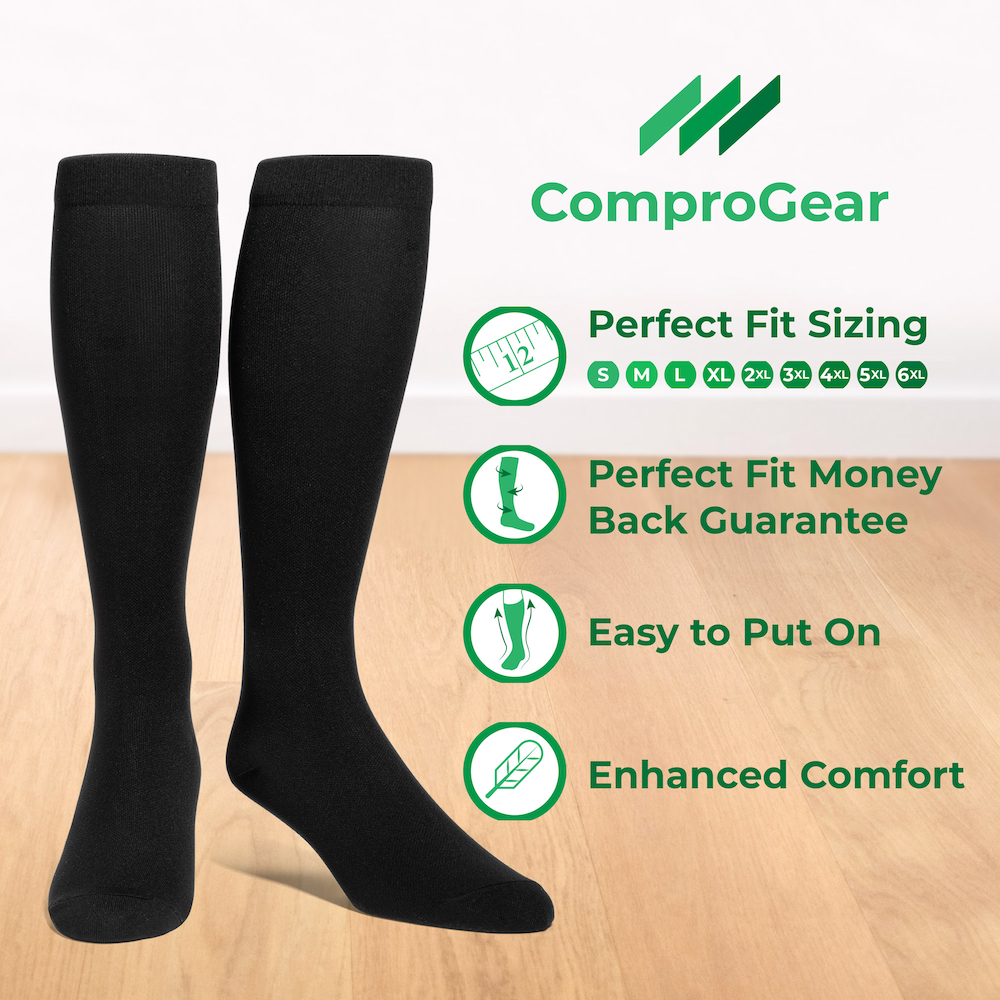Are Runners Compression Socks worth the hype? Yes, but…
There are potential benefits you stand to achieve as you use them for your sporting activities.
Want a little highlight on runner’s compression socks before we explore the benefits?
Runners Compression Socks
In the racing realm, compression socks have infiltrated and gained prominence, becoming one of the must-wear gears for professional runners. What makes its use prominence? Let’s find out!
Runners’ compression socks are stretchy; that is, they are elastic, primarily designed to be worn on legs. They can stretch over the foot up to the knee, or start at the ankle. These super firm socks will squeeze around the calf, thus compressing veins present on the face of the leg, and the muscles and arteries of the legs. So, what comprehensive benefit do they bring?
The Benefits of Compression Socks
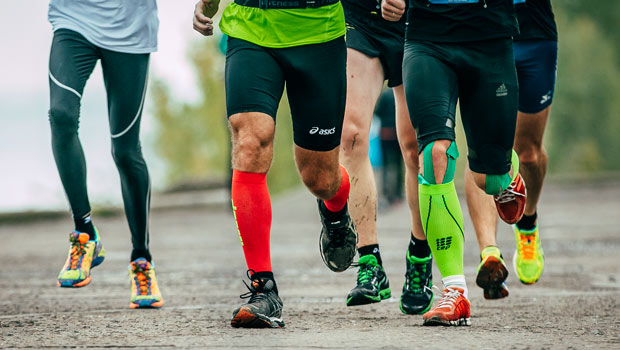
When you are about to start your next race, look around you, you will undoubtedly find out that the majority of runners beside you will be on their compression socks. Why? Those Runners are convinced that the socks help them to attain new athletic heights. But if you are in doubt, it would be nice to take a look at some of the benefits you will derive from its use in your activities.
Enhanced Oxygen Delivery
Compression socks aid the constant flow of oxygen-rich blood to your muscles, and this enhances your performance. I’m pretty sure you don’t want to be halfway in your marathon and experience popping out of your calves.
Runners compression stockings do this by providing graduated compression, that is, being tighter at the base and looser as the tip. They are designed to assist in helping your leg to wrestle the effect of gravity by pushing blood back to the heart. The pressure created by the socks will take off fluid the leg, thus increasing the flow of blood into the heart. As a result, you can get those vital oxygen and nutrients circulate where they are needed.
Reduce lactic Acid
Compression socks can limit or eradicate muscle soreness. Each time you exercise, your body produces lactic acid. If you allow lactic acid to hang out in your muscles, you could feel heavy sore the following morning, and this wouldn’t let you run your race to the finish as dreamt.
With runners compression stockings, you can fill this vacuum. They will constrict the veins in the right way. The moment your veins start to narrow, the velocity of the blood that is flowing through will begin to increase. And an increased velocity will mean that your lactic acid and blood will make their trip back to the heart in a speedy way, thus decreasing the amount of muscle soreness that you might experience when next you are to run.
It Prevents Cramps and Swelling
Compression could assist in reducing excessive movement of the calf muscles. Wearing these socks when you run would help you decrease the effort you put on your legs. Runners compression hoses will be adopted to control swelling in your ankles, legs, and feet. Since these socks accurately squeeze these regions, they halt the build-up of fluid in the tissues.
Popular Articles on ComproGear
How Long to Wear Compression Socks for Edema Compression Socks for Fluid Retention
What Users of Runners Compression Stockings Say
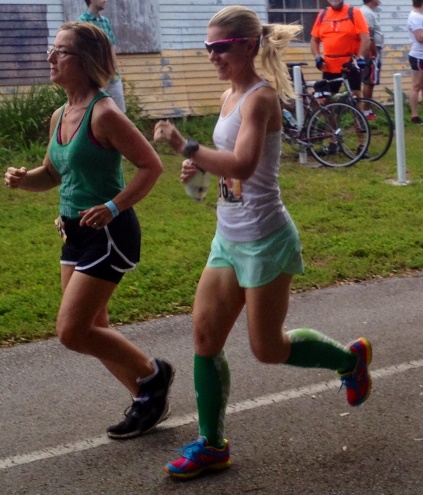
Some runners will tell you that they are in love with the fancy look of compression socks, starters and some professionals will tell you that their performance was enhanced. Others with minor leg injury would say that the use of runners’ socks lessen their recovery period.
Check some popular comments from some wearers:
- “After wearing runners compression socks for a whole day, I experienced less sore.”
- “These runners’ compression socks aid me to run faster and longer.”
- “For long-distance runners, these runners’ compression hose are a must-have.”
With reviews like these, it is pretty difficult for some individuals to resist investing in a pair of compression socks that will be fitting for them. Nevertheless, the research on runner’s compression socks isn’t so cut and dry. But histories have proven beyond doubt that they are useful for excellent athlete performance. Let’s dig further!
Compression Timeline
Even though they have become a necessity for runners recently, runners compression hose aren’t new. Histories have shown that they have been active for quite a long time, in fact, for centuries.
- New Stone Era: Compression therapy is traceable to the Neolithic period. Cave dwellers then wear it, before marathon buddies pick it up. There are hundreds of Cave painting dating 500 BCE, where you will spot soldiers with bandaged legs. Even though some researchers can’t ascertain if they were used for compression, this is typically regarded to be the initial evidence of this type of therapy.
- Edwin Smith Papyrus: After many millenniums, an antique collector bought the world’s oldest surgical material, Edwin Smith papyrus, dating close to 1600 BC, and it mentions its use as a compression therapy for legs.
- Hippocrates: In the era of Hippocrates, he utilizes compression bandages to halt the pooling of blood in the patient’s legs between 450 and 350 BC. What do you think? If it sure makes sense for Hippocrates, it does make sense for you too!
Now compression therapy in the modern era, how does it look like?
Compression Therapy in the modern era
Compression therapy has been utilized in varying ways. In the 20th century, there are new and unique methods of compression therapy that popped up. It is a usual thing to see ladies line up and make a purchase of laced stocking, elastic band, adhesives, and bandages.
Today, compression therapy has been used in treating a wide range of medical issues. Especially for folks that wrestle with some specific issues. These include:
- Leg ulcers
- Diabetes
- Leg Swelling
- Varicose veins
- Circulatory problems
- Deep vein thrombosis
In recent decades, compression therapy has leaped from medical treatment down to the athletic gear. For instance, it is common to see recreation and professional athletes with compression socks, sleeves, compression armbands, and everything else in between.
Do you wonder how runner’s compression socks do the magic? The secret is found in the understanding of how blood flows in the body.
The Flow of Blood in the Body- A Brief Highlight
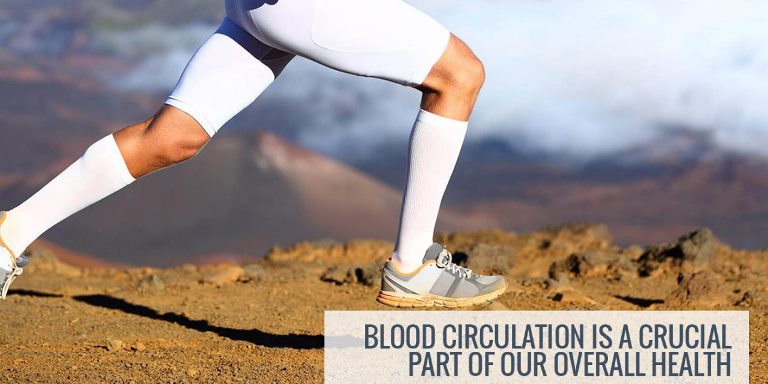
To help you understand how compression socks work, it will be helpful to understand how blood flows in the body so you can see how this unique and special compression socks can facilitate the functionality.
The heart is highly tasked with the pumping of oxygenated-rich blood to the muscle into the arteries. The moment cells exhaust the nutrients and oxygen in the blood, the deoxygenated blood and several other waste products swim to the veins, and they are channeled back to the heart.
After the deoxygenated blood has channeled its way to the heart, it will then oxygenate from the lungs, completing the circle and starts again. Sounds great, huh? Okay fine! What’s next is: How does this function in the running performance?
This is it: The more oxygen your cells get, the better they will function. And what will help to smoothen that function? Runners compression socks! The socks will assist in the circulation of blood to be more efficient via the legs, which makes the blood flow back to your heart faster. The faster the blood flows, the better the circulation. If the distribution gets better, the more oxygenated the cells in your body. Isn’t that amazing? Yes!
Are you ready to get one for yourself? You have to understand how the sizing works. Find that in the next subheading.
How to Size Runners Compression Sock
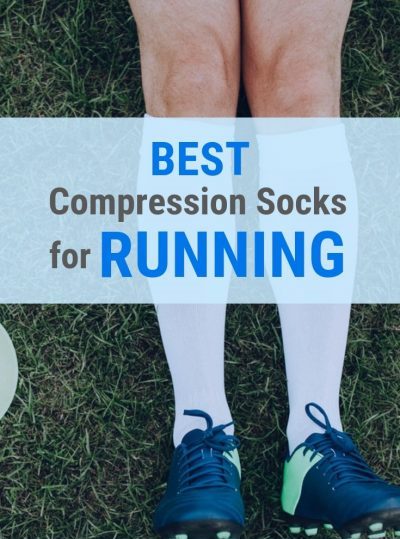
If the benefits have propelled you to get yourself one of the runners compressions socks, then you will need this part to let you understand how you can size up the one you are buying. When purchasing runner compression socks, you shouldn’t buy one that is too tight and too loose. It must be the exact size! Overly constrictive compression should be a concern for an athlete.
A published study in the American Journal of Nursing found out that several patients who wear compression socks were given the wrong size, and in fact, some among them were not wearing them correctly. Thus, you should not be a victim. If you have to wear, wear the right size.
Furthermore, improper application of runner’s compression socks would also lead to excessive pressure on the skin, which will result in discomfort and bruising. While it is more prevalent in cases of medical compression socks, it is quite essential to consider sizing when it comes to the purchase of compression socks for running.
Sadly, sizing isn’t often easy. The fact is there isn’t a universal metric or standard for measuring runners compression socks. Therefore, go with the accurate measurement of your legs that you did, or you were helped with, by a professional. If you measure yourself, ensure that you measure varying parts, your ankle, thigh, calf, and leg and check them on the runners compression socks that you want to purchase.
Shoppers of medical-grade stockings must do their homework too. They can even head into a medical store and seek a professional fitter so they would help them in choosing the right size and compression level.
Nevertheless, if you are shopping strictly for running activities, you might try out some trial and error approach, although this isn’t recommended. In the right situation, it would be nice to consult a professional fitter too. To engage in trial and error in a fine manner, try this approach:
- Try a few different pairs
- Walk a few distances
- Verify the level of comfort you experience.
- You can even do a little jump, hop, and skip around the store.
- All these will help you know if a sock is fit or not.
Different Compression ratings – What they mean!
As you shop for compression socks, you must consider the level of compression needed. You don’t have to go the extra mile to constrict your leg. A traditional compression sock is available in four distinct levels of compression. You can find them measured in mmHg (millimeters of mercury). This indicates the amount of pressure a sock will apply to your legs. The higher the reading on compression socks, the higher the pressure that will be exerted.
Below 15mmHg: This level of compression is regarded as being light or mild. It is typically recommended for those who are healthy, tired from standing and sitting all day. It is recommended for this type of profession:
- Medical professionals
- Pregnant women
- Waitresses
From 15-20mmHg: This is regarded as moderate compression. This can help in preventing deep vein thrombosis, and it can help in preventing leg swelling for those traveling by plane.
From 20-30mmHg: This third category is usually referred to as medical-grade compression. It can be applied to treat varicose veins, blood clots, and edema.
Above 30mmHg: This range of compression is usually addressed as post-surgical situations. So, users must obtain a recommendation from a medical professional before they start the use.
Conclusion
If an achy, fatigued leg and other leg conditions are what would hinder your performance in a running competition. You’ve been presented the solution!
Do you have any excuse? Definitely no. If your mates are doing wonders, you too can! All it takes and requires is an investment in the right type of runner’s compression socks.
Furthermore, do not expect to wear runners compression stockings the way you will wear regular socks. There are proper ways of doffing and donning that your health professional will tell you. Stick to these patterns; they can impact your experience too. Finally, it is recommended that you get two pairs that are of different and fancy patterns. This ensures that you don’t keep repeating the same socks over and over, which will impact the strength and lifespan of the socks. I wish you an excellent result in your next running endeavor – during and after!
